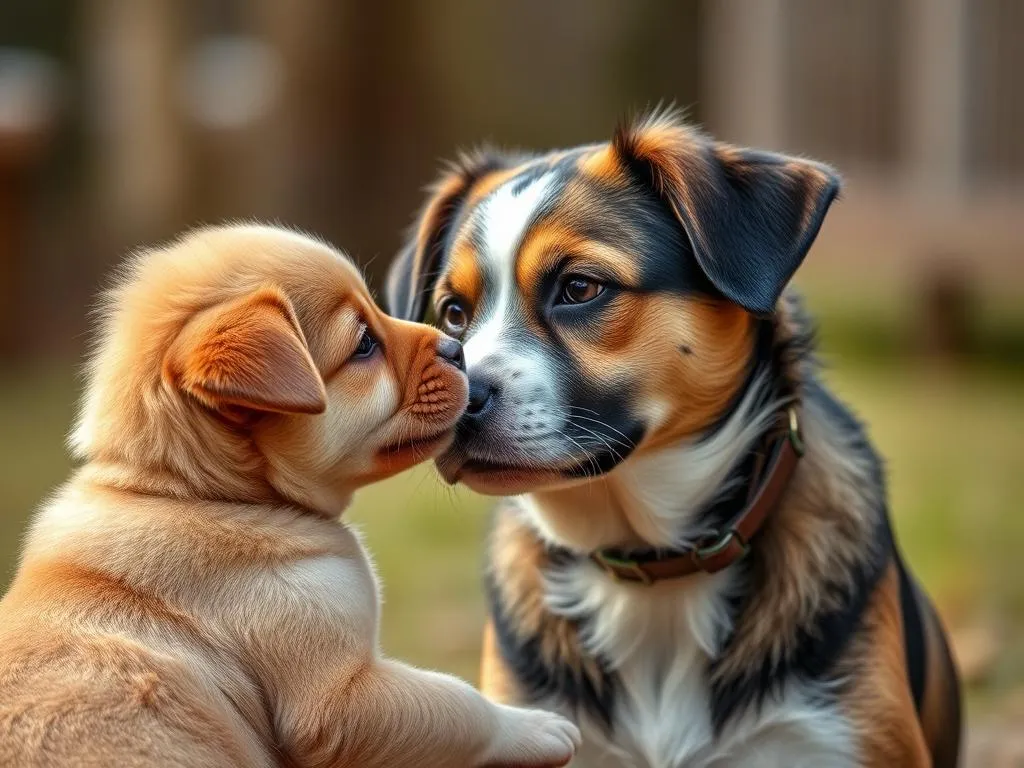
Introduction
Introducing a puppy to an existing dog is a significant step that can set the tone for their future relationship. The importance of this introduction cannot be overstated; a successful meeting can lead to a harmonious household filled with love and companionship for both dogs. Conversely, a poorly managed introduction can result in stress, anxiety, and even aggression, which can disrupt the peace of your home.
This article aims to provide a comprehensive, step-by-step guide on how to introduce a puppy to a dog. By understanding dog behavior, preparing adequately, and following a structured introduction process, you can foster a positive relationship between your new puppy and your existing dog. Let’s dive into the details!
Understanding Dog Behavior
Canine Social Structure
To effectively introduce a puppy to an existing dog, it’s essential to understand canine social structure. Dogs are pack animals, and they thrive within a social hierarchy. Each dog has its role, and the existing dog may see the introduction of a new puppy as a challenge to its status. Recognizing your current dog’s temperament is crucial; some dogs are more tolerant and welcoming, while others may feel threatened or anxious.
Signs of Stress in Dogs
Monitoring both the existing dog and the puppy for signs of stress is vital during the introduction process. Common behaviors that indicate discomfort include excessive barking, growling, stiff body posture, or attempts to escape. Understanding these signs will help you intervene appropriately and ensure a safe environment for both dogs.
Preparing for the Introduction
Assessing Your Current Dog
Before introducing a puppy, evaluate your dog’s personality and past experiences with other dogs. Consider factors such as age, breed, and socialization history. For instance, older dogs may be less tolerant of a boisterous puppy, while some breeds are naturally more sociable. Understanding your dog’s behavior will help you tailor the introduction process to their needs.
Preparing Your Home
Creating a safe and welcoming environment is crucial when preparing for the introduction. Set up separate areas for both dogs, allowing them to have their own space. This can help prevent territorial behavior. Additionally, gather necessary supplies such as leashes, toys, and treats to aid in the introduction.
Health Considerations
Health should also be a priority. Ensure that both dogs are up to date on vaccinations to prevent the spread of any diseases. If you have any health concerns about either dog, consult with your veterinarian before proceeding with the introduction.
The Introduction Process
Choosing the Right Environment
Selecting the right environment for the introduction can make a significant difference. Neutral territory, such as a park, can be an excellent choice, as it minimizes the existing dog’s territorial instincts. Alternatively, if you choose to introduce them at home, ensure that both dogs feel comfortable and that the space is free from distractions.
Initial Meeting
When the time comes for the initial meeting, keep both dogs on leashes to maintain control. Start by allowing them to observe each other from a distance. Gradually decrease the distance between them while using treats and praise to encourage calm behavior. This step-by-step approach will help them feel more at ease and reduce potential tension.
Observing Body Language
During the introduction, it’s crucial to observe both dogs’ body language. Look for signs of relaxation, such as wagging tails and relaxed ears. Conversely, be vigilant for signs of aggression or fear, including growling, raised hackles, or baring teeth. If you notice any concerning behavior, calmly separate the dogs and give them time to relax before trying again.
Post-Introduction Strategies
Gradual Integration
Once the initial introduction has taken place, it’s time for gradual integration. Allow the dogs to spend more time together in short, supervised interactions. This process helps them get accustomed to each other’s presence and builds a foundation for their relationship. Always monitor their interactions closely, intervening if necessary.
Positive Reinforcement
Utilizing positive reinforcement is key to fostering a good relationship between the two dogs. Reward both dogs with treats and praise when they display positive behaviors towards each other. Creating routines that encourage bonding, such as feeding them together or engaging in joint play sessions, can also promote a harmonious relationship.
Training Tips
Training can play a vital role in developing a successful relationship between the puppy and the existing dog. Teaching both dogs basic commands such as “sit,” “stay,” and “leave it” can help foster cooperation. Consistency and patience are essential; training should be a fun and rewarding experience for both dogs.
Troubleshooting Common Issues
Aggression or Fear
If signs of aggression or fear arise during the introduction process, it’s essential to address them promptly. Identifying the triggers for aggressive behavior is crucial. If the existing dog shows signs of aggression, it may be best to separate the dogs and seek the help of a professional trainer who can provide guidance tailored to your specific situation.
Jealousy and Attention-Seeking
Jealousy can also emerge during the introduction process, especially if the existing dog feels it is losing attention. To mitigate jealousy, ensure that both dogs receive equal love and attention. Set aside dedicated time for each dog, engaging in activities that they enjoy individually.
When to Seek Professional Help
If challenges persist despite your best efforts, it may be time to consult a professional dog trainer or behaviorist. Signs that indicate the need for professional help include ongoing aggression, persistent fear, or a lack of improvement in their interactions. Seek out qualified professionals who can provide personalized strategies to assist you.
Long-Term Considerations
Maintaining Harmony
Once the dogs have been successfully introduced, maintaining harmony is essential. Ongoing socialization for both dogs will help reinforce their bond. Regular playdates, walks, and training sessions can contribute to a positive relationship between them.
Regular Activities
Engaging in shared activities can strengthen the bond between your puppy and existing dog. Regular walks, playtime in the yard, or even training sessions can create shared experiences that enhance their relationship. These activities not only provide physical exercise but also mental stimulation, which is essential for a happy, healthy life.
Conclusion
Successfully introducing a puppy to an existing dog can be a rewarding experience that enhances your household dynamic. By understanding dog behavior, preparing for the introduction, and following a structured process, you can foster a loving relationship between your pets. Remember to be patient and observant throughout the introduction process, as each dog’s journey is unique.
Having multiple dogs can bring immense joy and companionship into your life, and with the right approach, you can ensure that their relationship flourishes. Enjoy the process, and celebrate the moments of joy that come with having both a puppy and a dog in your home!









